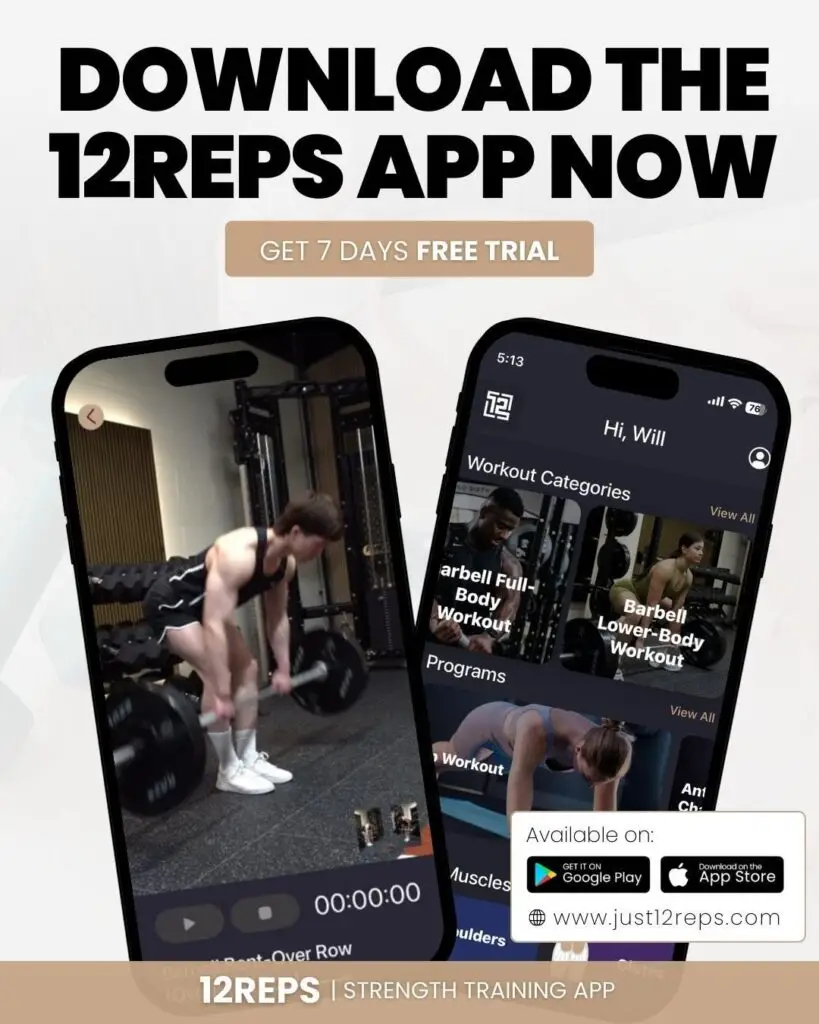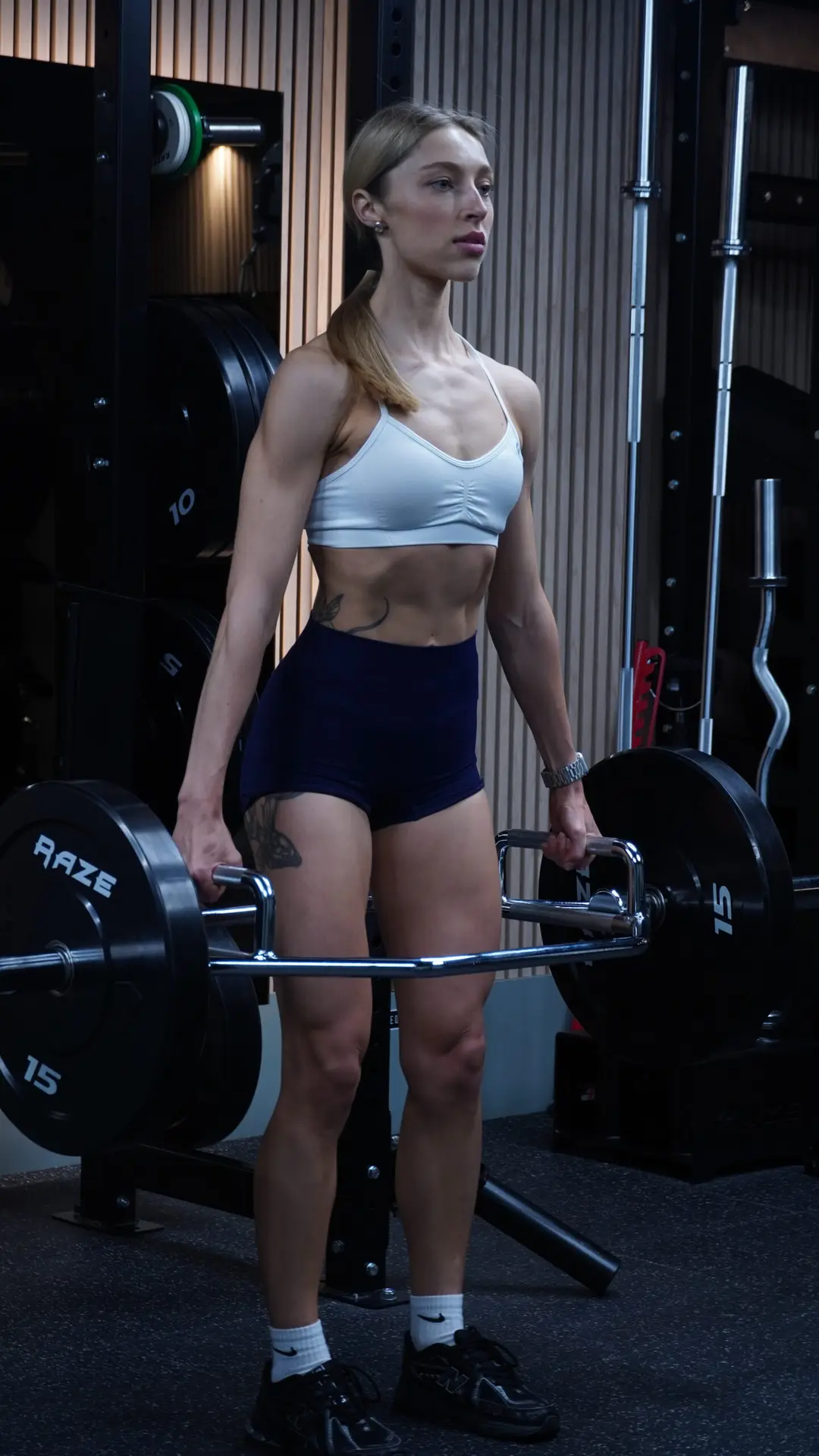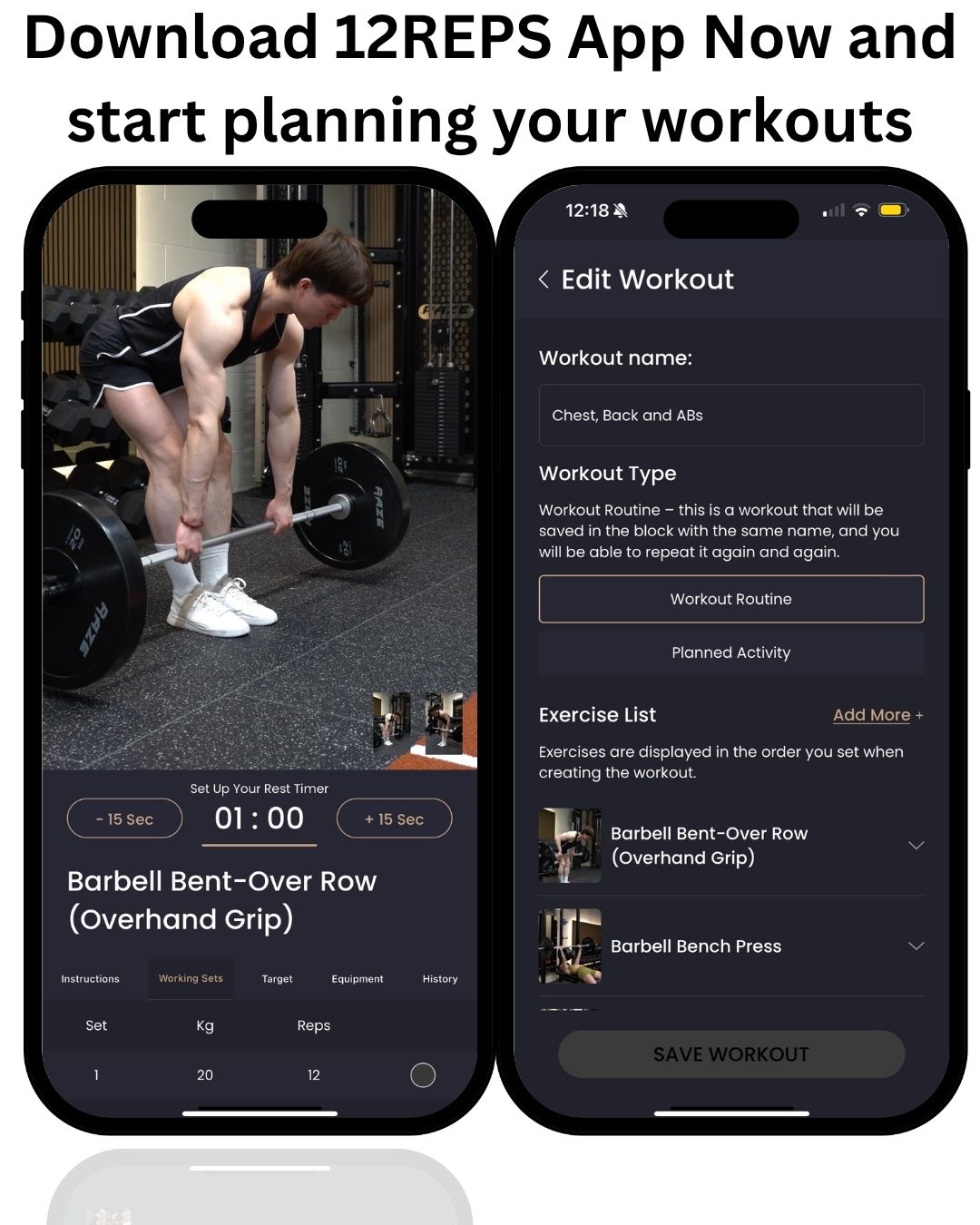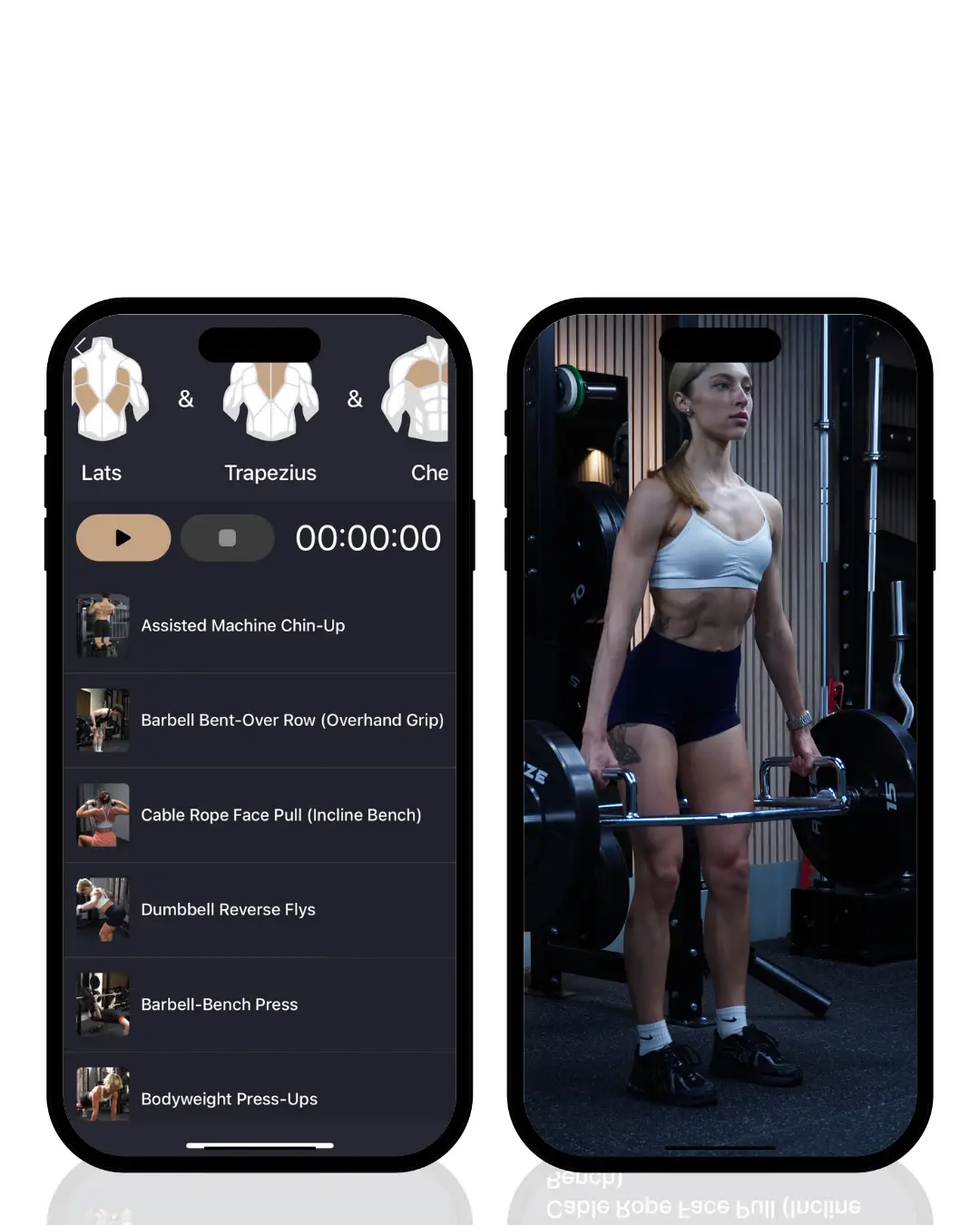By Will Duru, BSc (Hons) Sport and Exercise Science, Award-winning Personal Trainer with over 10 years of experience in strength training and optimising recovery
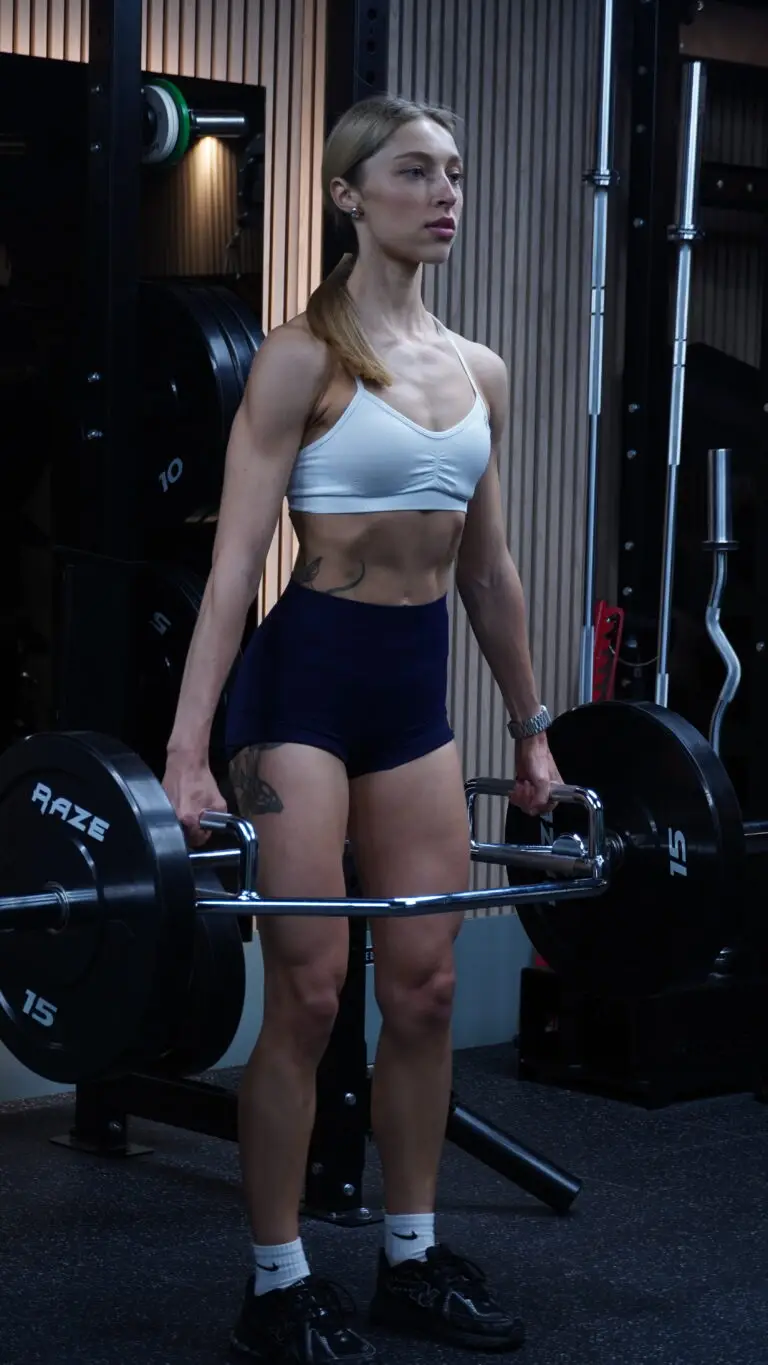
How Lower Body Training Transforms Your Metabolism
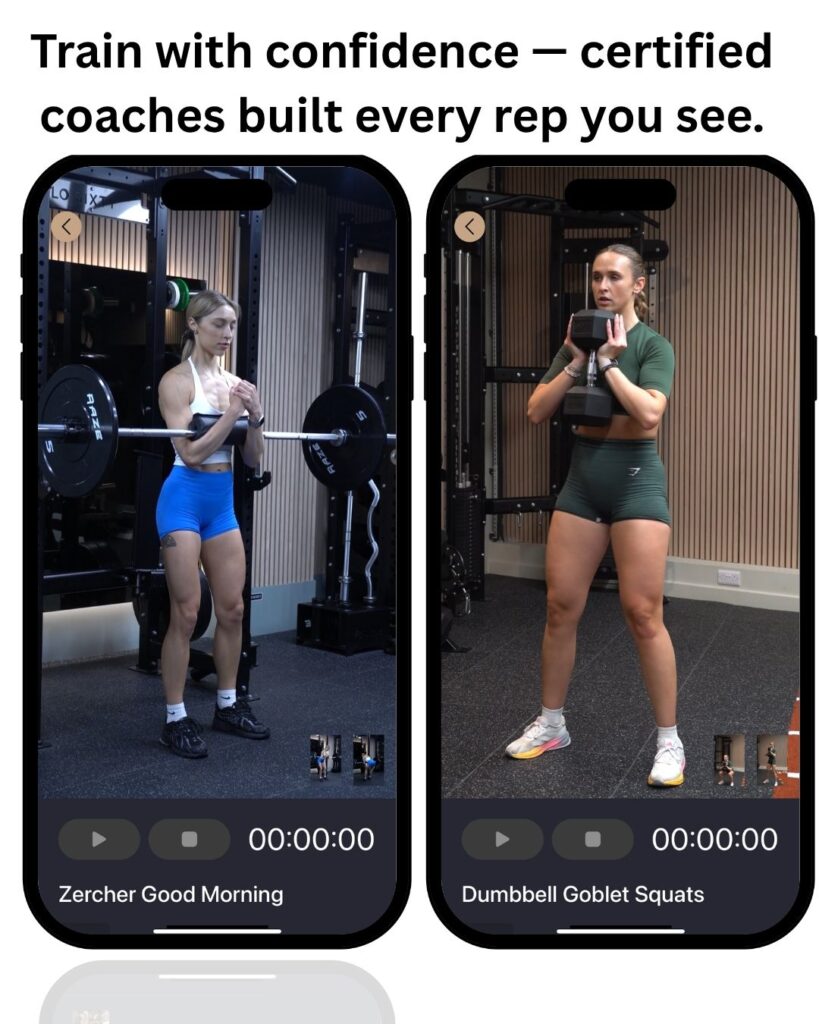
The Complete Women's Lower Body Strength Training Workout
Workout Overview
Frequency: 2-3 times per week
Duration: 45-60 minutes
Equipment: Barbell, dumbbells, kettlebell, trap bar, calf raise platform
Goal: Build lower body strength, muscle, and functional movement patterns
Complete Lower Body Strength Training Program
| Exercise | Sets | Reps | Weight (% of 1RM) | Rest Period | 12reps App Notes |
| Barbell Hip Thrust | 4 | 8-10 | 75-85% | 2-3 minutes | Track hip thrust progression weekly |
| Trap Bar Deadlift | 4 | 6-8 | 80-90% | 3-4 minutes | Log trap bar weight increases |
| Dumbbell Reverse Lunges | 3 | 10-12 each leg | 65-75% | 90 seconds | Record per-leg performance |
| Dumbbell Romanian Deadlift (RDL) | 3 | 10-12 | 70-80% | 2 minutes | Monitor hamstring flexibility gains |
| Kettlebell Goblet Squats | 3 | 12-15 | 60-70% | 90 seconds | Track depth and control improvements |
| Calf Raises | 4 | 15-20 | 70-80% | 60 seconds | Log single vs. double leg variations |
Exercise Execution and Form Cues
Trap Bar Deadlift Form: The trap bar deadlift offers a more quad-dominant variation of the traditional deadlift while maintaining significant posterior chain activation. Step inside the trap bar with feet hip-width apart, grip the handles with arms straight down. Initiate the movement by driving through your heels and extending your hips and knees simultaneously. Keep your chest up and shoulders back throughout the movement, maintaining a neutral spine position.
Dumbbell Reverse Lunge Execution: Reverse lunges provide unilateral strength development while being more knee-friendly than forward lunges. Hold dumbbells at your sides or in a goblet position. Step backward with one leg, lowering your hips until both knees are bent at approximately 90 degrees. The front knee should track over the ankle, not pushing forward past the toes. Drive through the front heel to return to the starting position.
Romanian Deadlift (RDL) Technique: The RDL specifically targets the hamstrings and glutes through hip hinge movement. Hold dumbbells with an overhand grip, arms extended. Initiate the movement by pushing your hips back while maintaining a slight knee bend. Lower the weights along your legs until you feel a stretch in your hamstrings, then drive your hips forward to return to the starting position.
Kettlebell Goblet Squat Form: Hold a kettlebell at chest level with both hands, elbows pointing down. Feet should be slightly wider than hip-width with toes slightly turned out. Descend by pushing your hips back and bending your knees, keeping your chest up and weight distributed across your entire foot. Descend until your hip crease is below your knee cap, then drive through your heels to stand.
Calf Raise Execution: Position the balls of your feet on a calf raise platform or step, allowing your heels to drop below the level of your toes for a full stretch. Rise up onto your toes by contracting your calf muscles, holding the peak contraction briefly before slowly lowering back to the stretched position.
12Reps feels like more than just another workout app. It works like a coach who’s there every time you open it, making sure you know exactly what to do and how to do it.
The setup is quick. You answer a few simple questions about your goals, the equipment you have, and how often you want to train. From there, the app creates a program that adjusts as you get stronger and fitter. No guesswork, no wasting time scrolling through routines that don’t match your needs.
What stands out most is the simplicity. The layout is clean and easy to follow, so you spend less time figuring out the app and more time lifting. Exercise demonstrations are clear, and every set, rep, and rest period is tracked for you. It gives you structure without making things complicated.
12Reps is built for beginners who want guidance, but it’s just as useful for experienced lifters who need a reliable way to stay on track. It adapts to you. If life gets busy, the app keeps your training consistent. If you’re ready to push harder, it updates your plan so you keep moving forward.
It’s also refreshing to see an app that values progress over gimmicks. The focus is always on your training, your results, and helping you build lasting habits. Whether your goal is strength, muscle, or overall fitness, 12Reps gives you the clarity to focus on what matters most: showing up and getting the work done.
If you want a tool that makes strength training simple, smart, and personal, 12Reps is worth your time. You can download and get started today at the 12Reps app.
